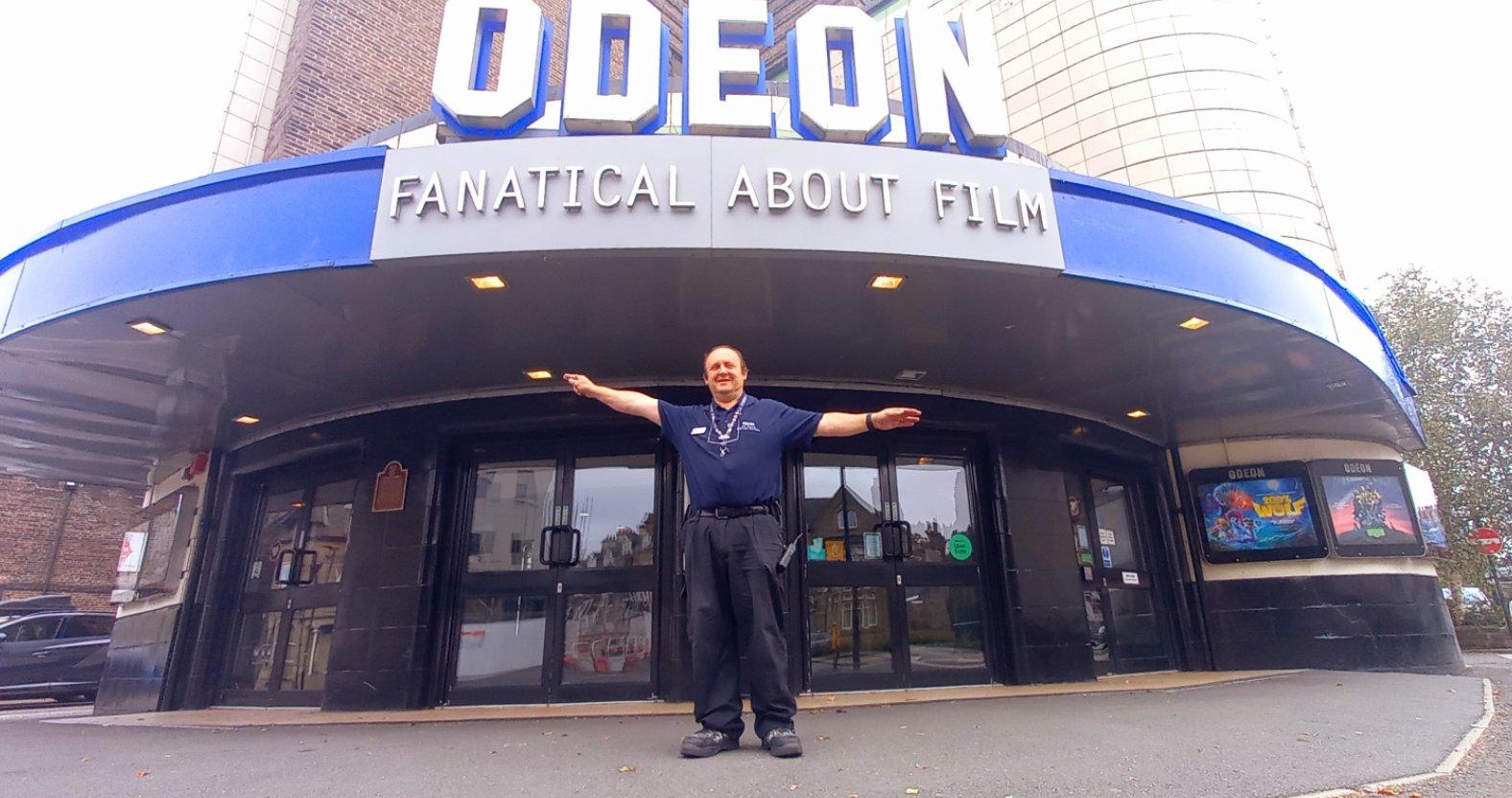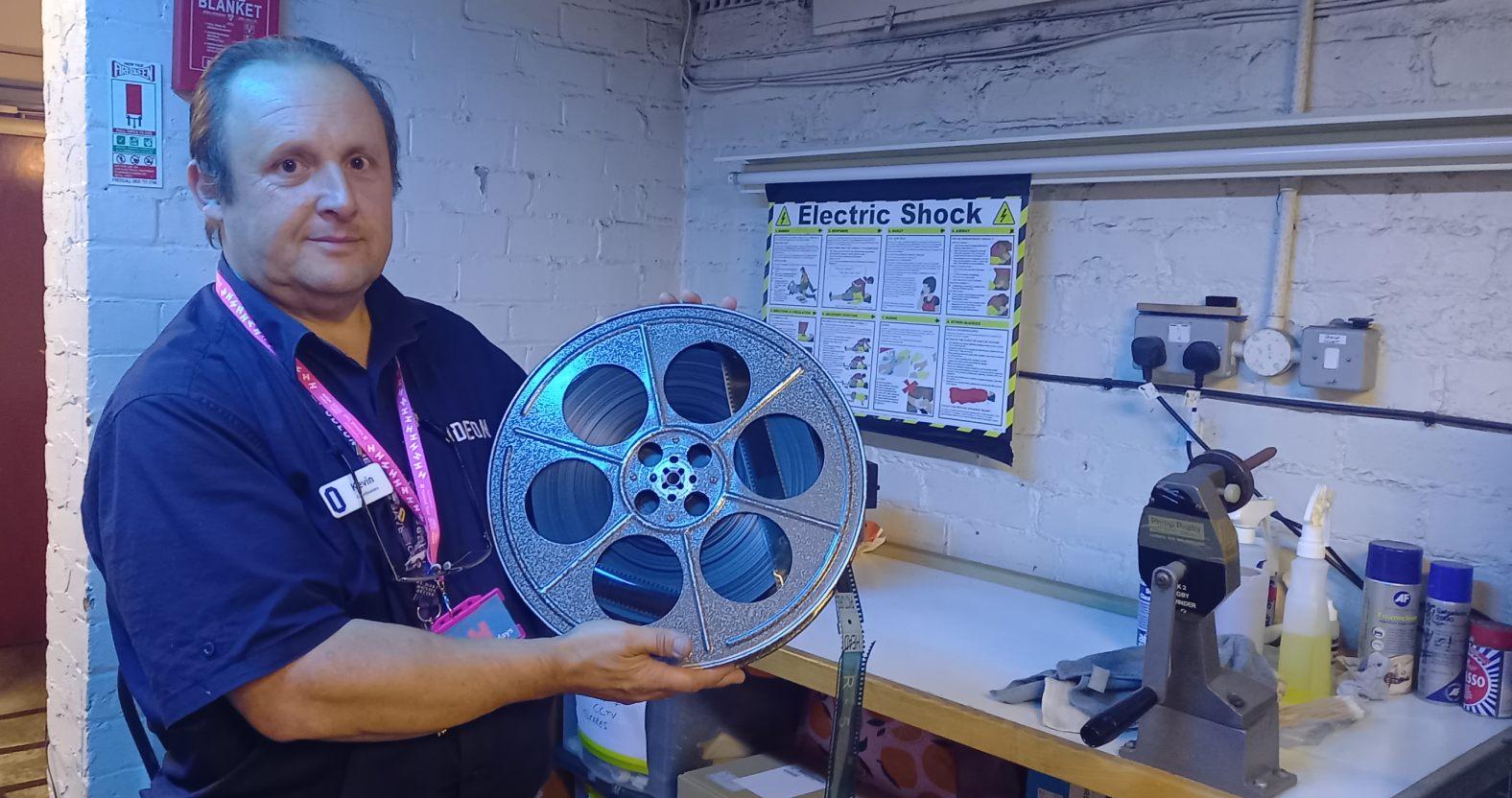Subscribe to trusted local news
In a time of both misinformation and too much information, quality journalism is more crucial than ever. By subscribing, you can help us get the story right.
- Subscription costs less than £1 a week with an annual plan.
Already a subscriber? Log in here.
22
Sept 2024
Behind the screens with the Odeon's long-serving manager

I started straight from Harrogate College, where I’d studied ceramics. I was just looking for a part-time job, but once I’d started here I enjoyed it so much that I ended up staying.
I’d only ever been to the cinema twice before, so it was an area that interested me massively.

The Odeon originally had just one screen but now has five.
He was well and truly bitten by the film bug, and 37 years of working in the same place have done nothing to dampen his enthusiasm. He said:
I don’t think staying so long takes the magic away. I’m still quite passionate about the cinema, and about the building itself.

The 1930s Art Deco-style Odeon cinema in Harrogate.
And what a building. Harrogate's Odeon was opened on September 28, 1936, and its Art Deco structure is so iconic that it was even featured on a Royal Mail stamp in April 1996 as part of a set issued to celebrate 100 Years of Going to the Pictures.
Over the decades, it has passed through the golden age of cinema of the 1940s and '50s and into the modern era, when it was divided from one into five screens.
And, in common with all old theatres and cinemas, it has acquired accretions of history – and mystery. In other words, ghosts.
There are numerous reports, from staff, workmen and even ghosthunters, but one of the most disconcerting is from Mr Langford himself.
At the bottom of a back stairwell, there’s an external door whose locking mechanism is held in place by a strong steel pin about the width of a pencil. It’s a sturdy arrangement that takes some force to manipulate. And yet one evening, after Mr Langford had just put it in place and returned to the top of the steps, it clanged to the hard concrete floor, seemingly of its own accord.
Chillingly, that happened more than 50 times between 2002 and 2004, with no logical explanation ever found.
Does it freak him out?
It does a bit, yes! I try not to think about it too much.
Although he most enjoys being front of house, meeting the public, Mr Langford does spend a lot of time behind the scenes, making sure everything is running as it should.

Technology has moved on since the cinema used 20-minute reels of film like this one
In the projection room – which is “freezing in winter, boiling in summer” – he has seen the old film projectors give way to modern digital technology, with films automatically scheduled, and playlists and programmes compiled centrally at head office in Manchester.
Digitisation has also opened up more revenue streams, including corporate conferencing and screen hire for gaming evenings.
Four of the five screens have satellite capability for live shows, such as War Horse, which sold out four screens in one night.

Official industry data suggest that going to the cinema is still extremely popular
Mr Langford, who says he has never seen a film at any cinema other than an Odeon (and that includes Harrogate's Everyman) has also seen huge changes in cinema culture. He said:
In the late ’80s to the mid-’90s there were queues down the street, but there aren’t now, mainly because people book online in advance now.
We also used to get a lot more British films that were very popular, such as Shirley Valentine, The Full Monty and Notting Hill.
The biggest milestone was Jurassic Park. It was the first film we took credit card bookings for, and we had to employ someone solely to answer phone bookings for 10 hours a day.
Horror films never used to do very well in Harrogate, but since lockdown there have been a lot more of them – maybe because they're cheaper to produce – and they seem to be doing better. That’s been quite a shock – they're not my cup of tea.
We still sell loads of popcorn, but not as much as we used to before about 2000.

Popcorn is still the number-one movie snack
It might be tempting to see the decline in popcorn sales as a metaphor for the industry as a whole: still popular, but not quite as buoyant as it used to be.
But predictions of cinema’s demise – which crop up every time a new technology makes home viewing easier or cheaper – do seem premature. In 1987, when Mr Langford started working at the Odeon, there were 78.5 million cinema admissions. By 2001 – post video and DVD – that figure had more than doubled. By 2019, the year before the covid pandemic, there were 176.1 million – more than any year since 1970.
Certainly, Mr Langford sees no reason for pessimism – the last few years have been leaner for a reason.
He said:
There have been longer gaps between major releases because the product has not been there. Covid stopped everything, and then the writers’ strike knocked a hole in the schedules. But it’s getting back to normal now – the film slates are a lot better, and next year is supposed to be good.
He added:
Cinema always bounces back – even after TV, video, DVD and streaming. It’s a different dynamic when you’re watching comedy or horror with other people.
At the end of the day, it gets you out of the house and gives people something to look forward to.
0